
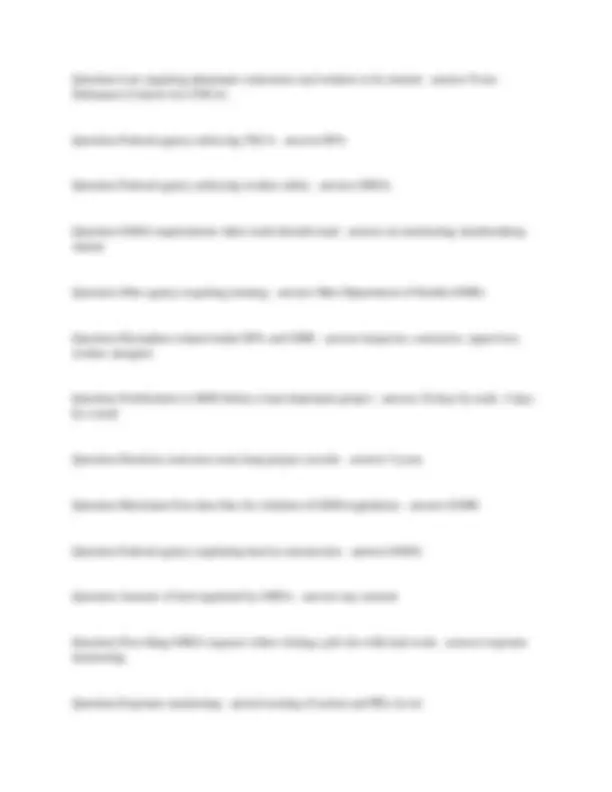
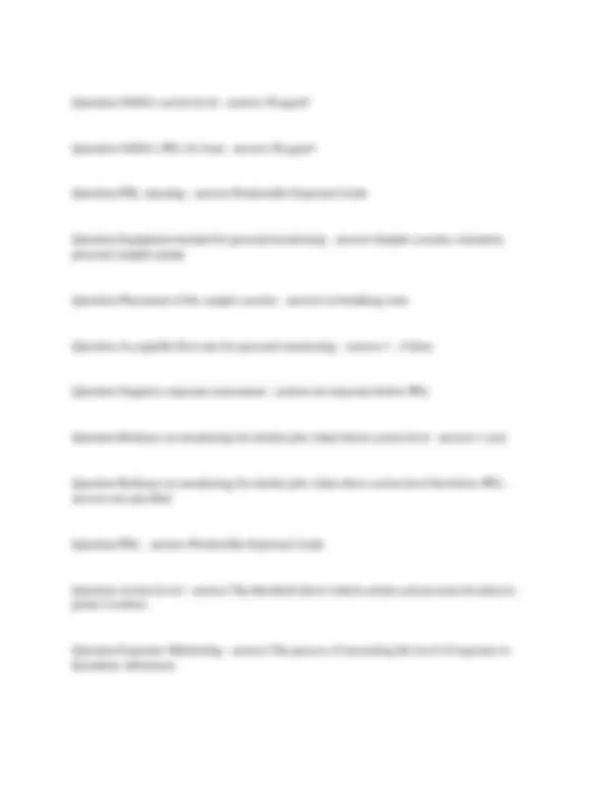
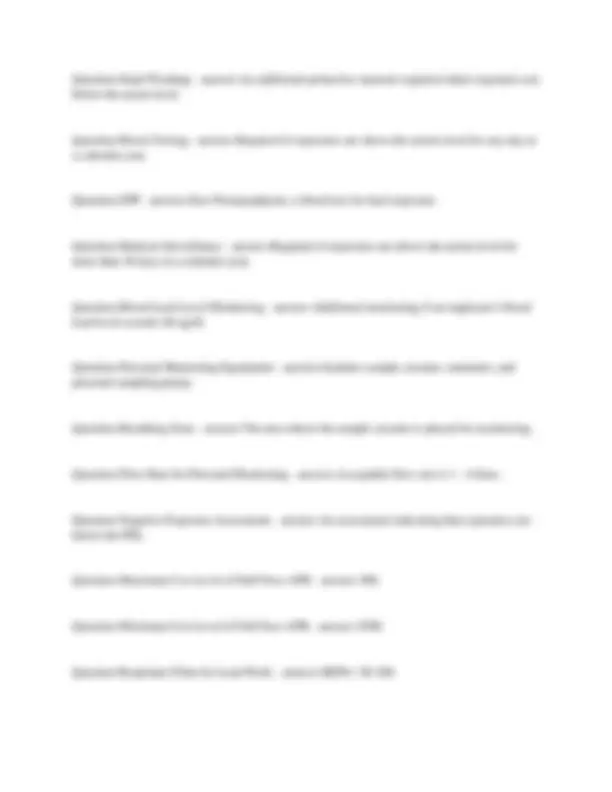

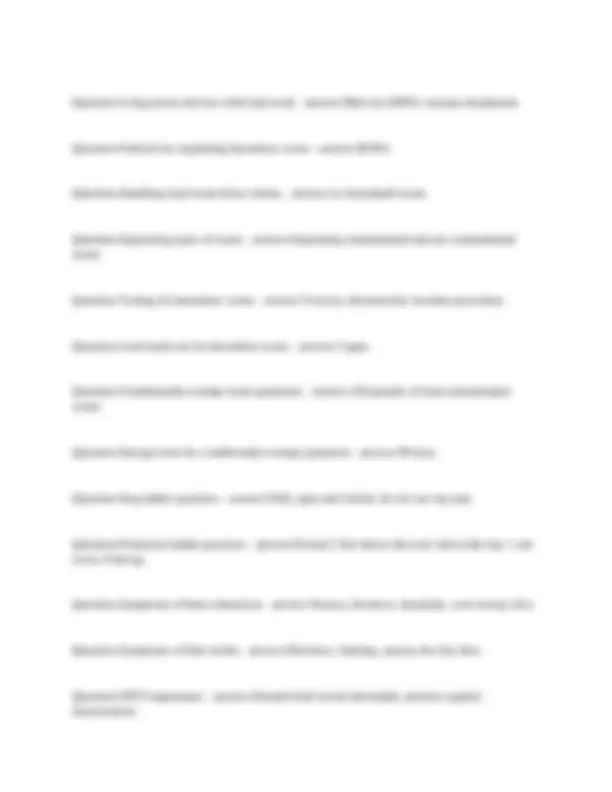
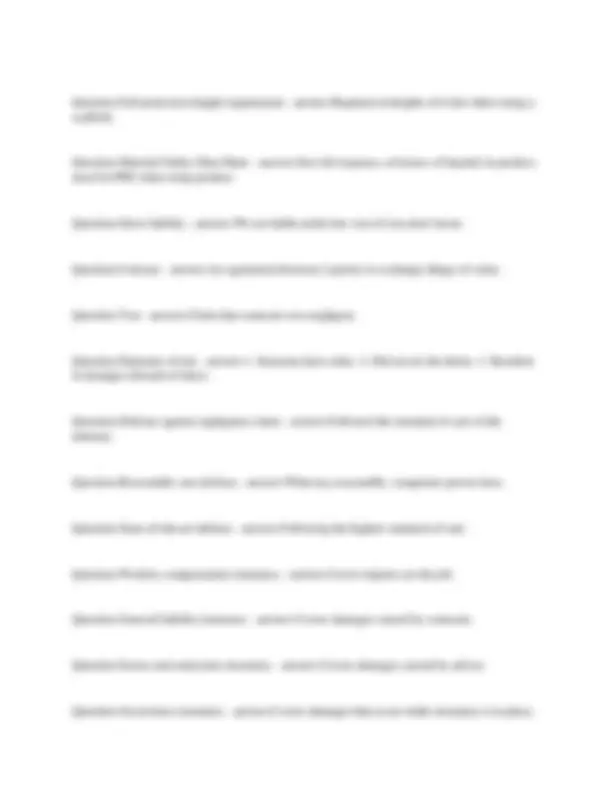
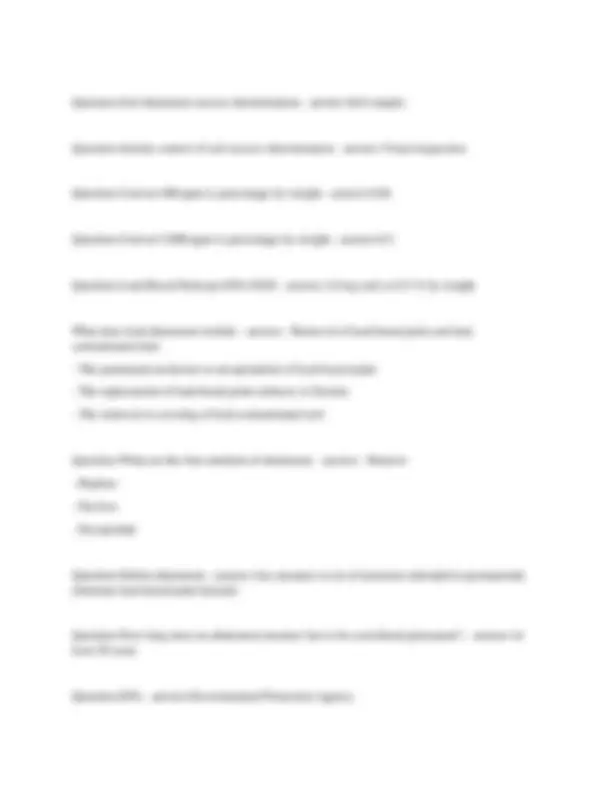
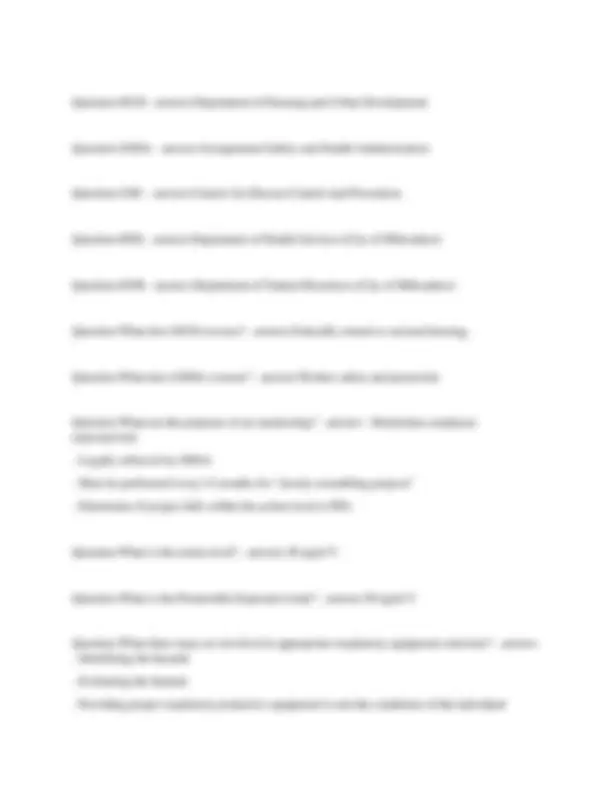
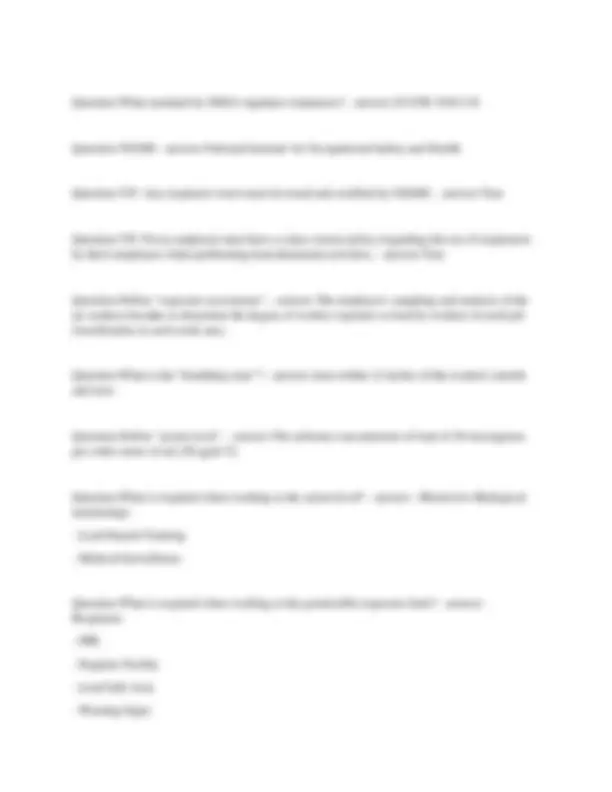
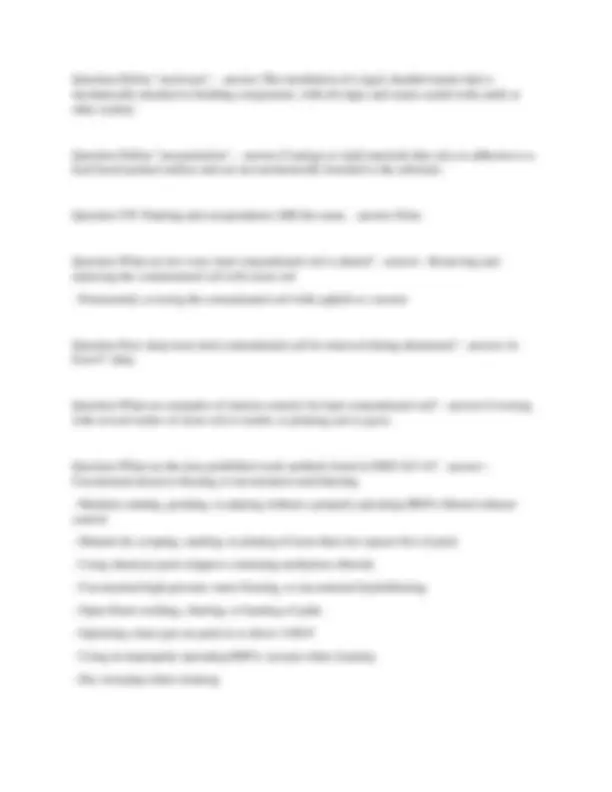
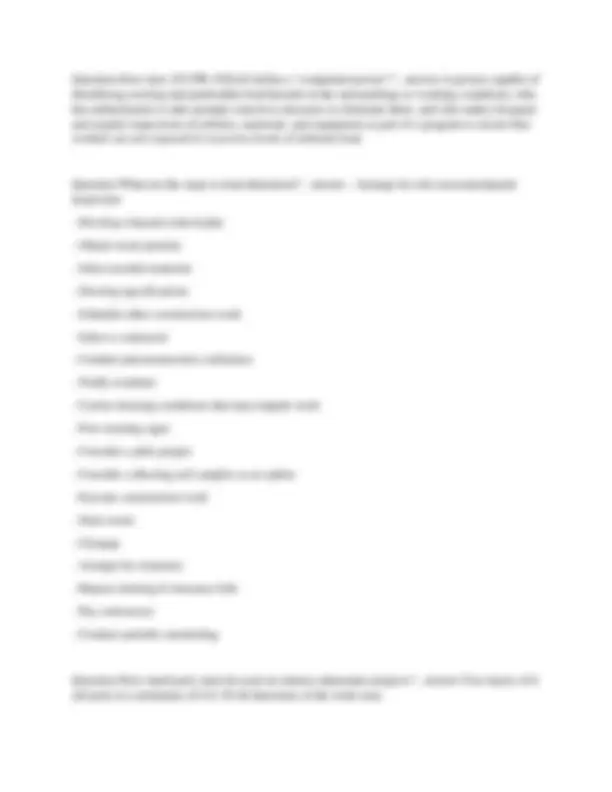
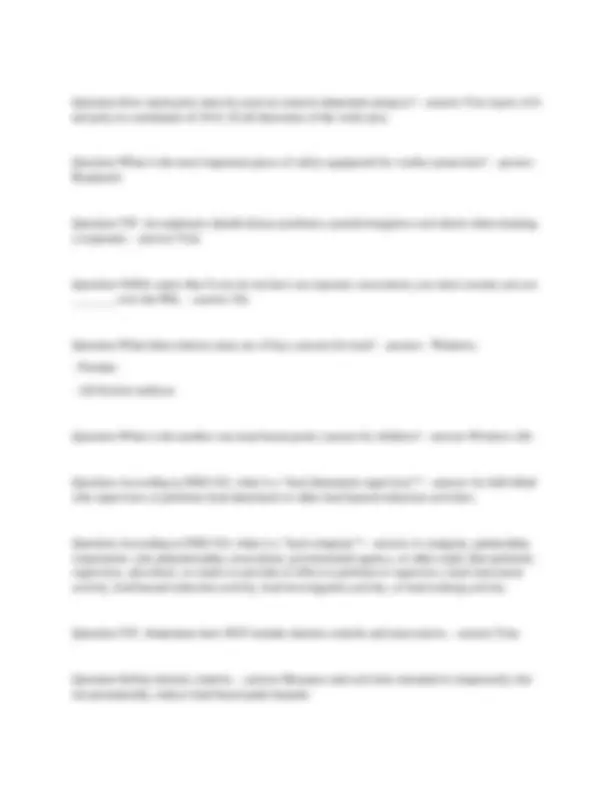
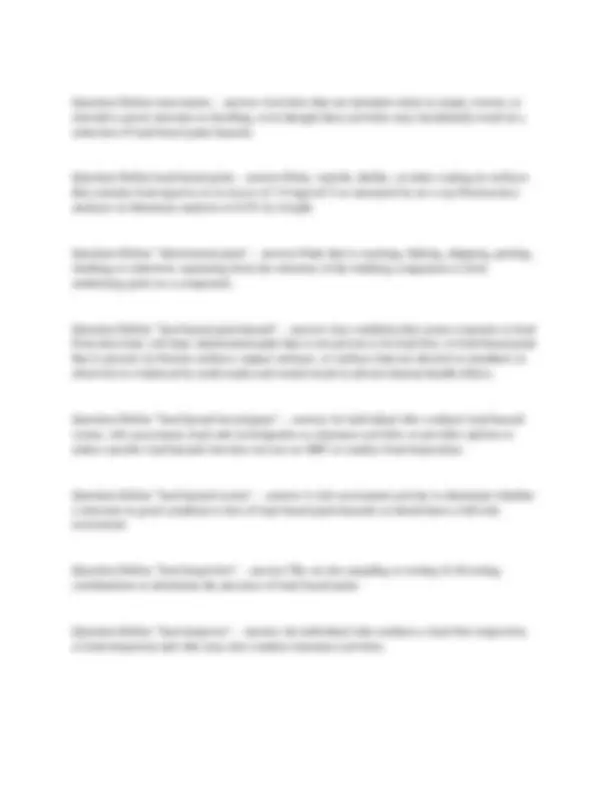
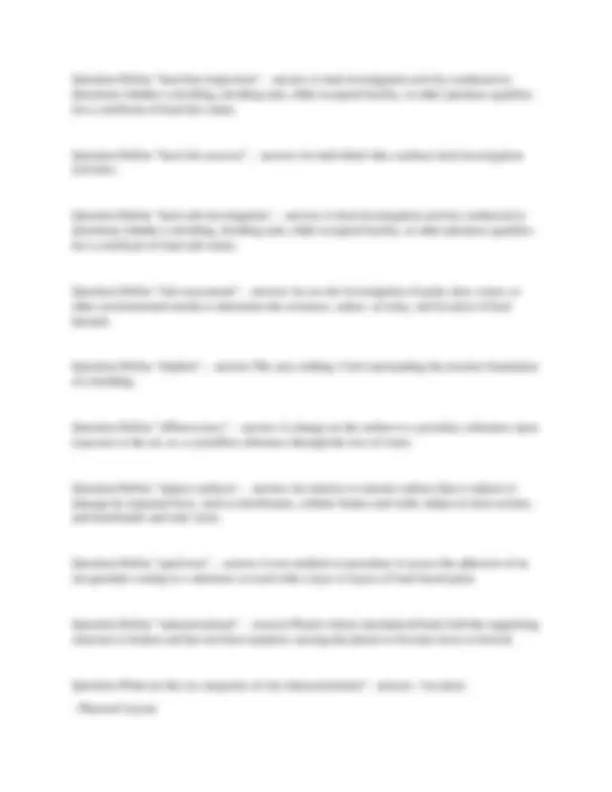
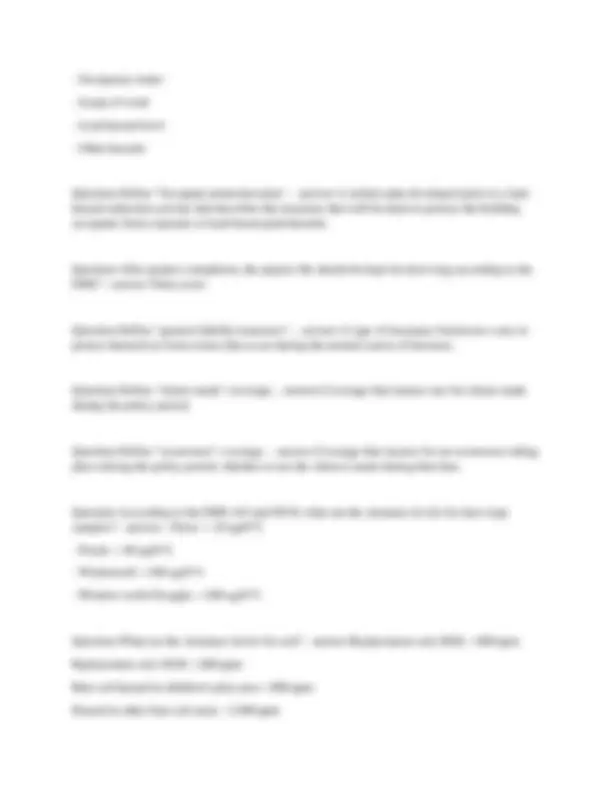
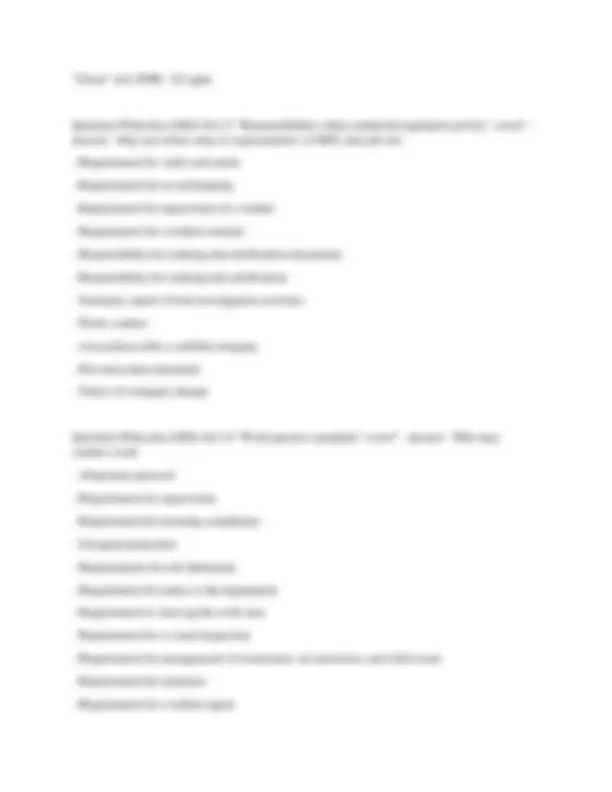
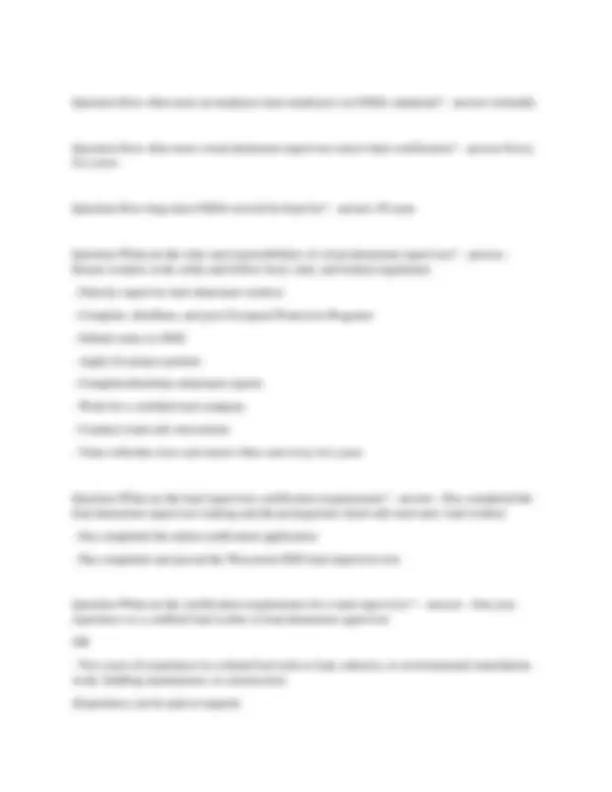
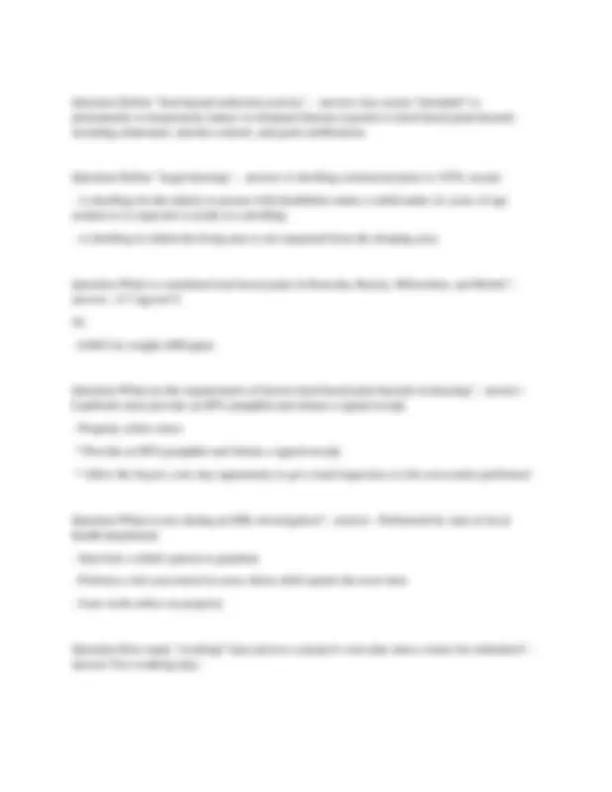
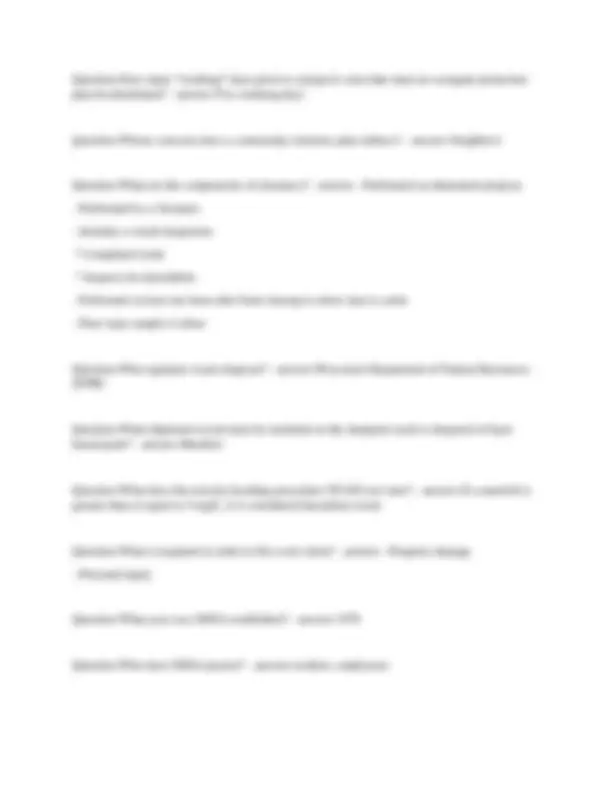
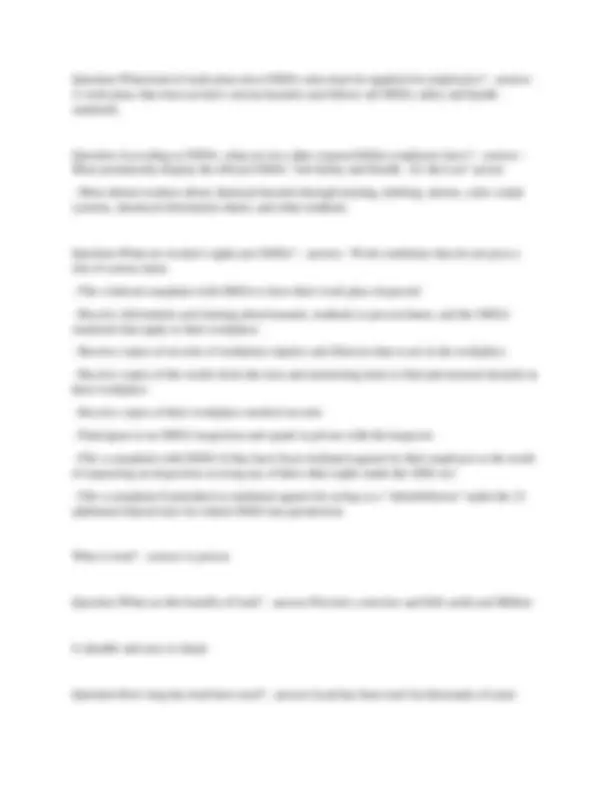
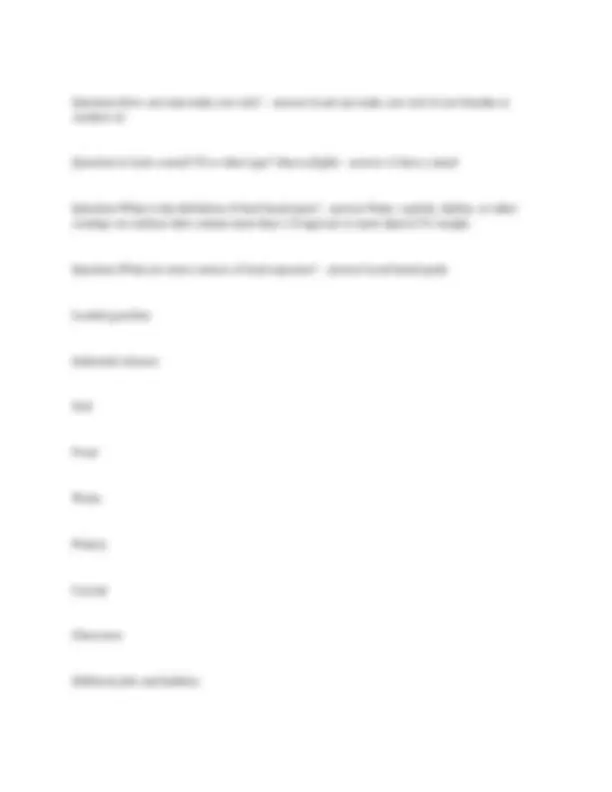
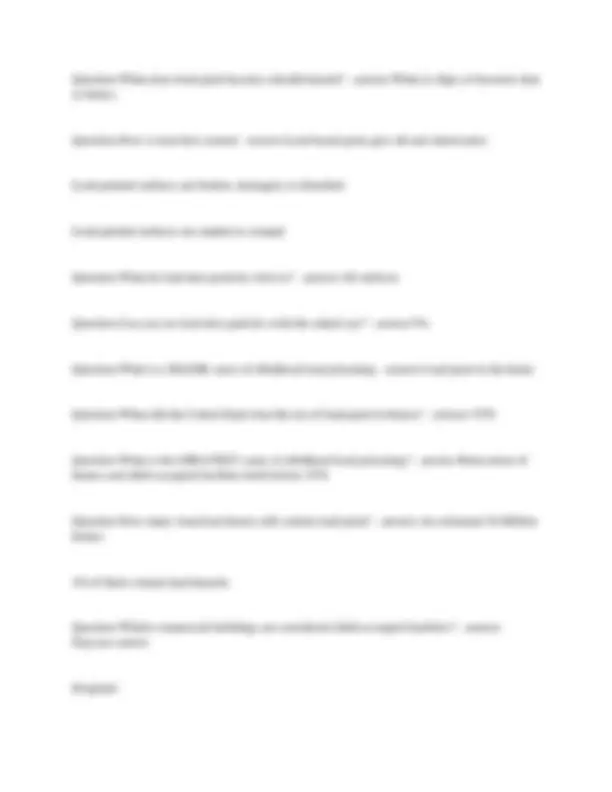
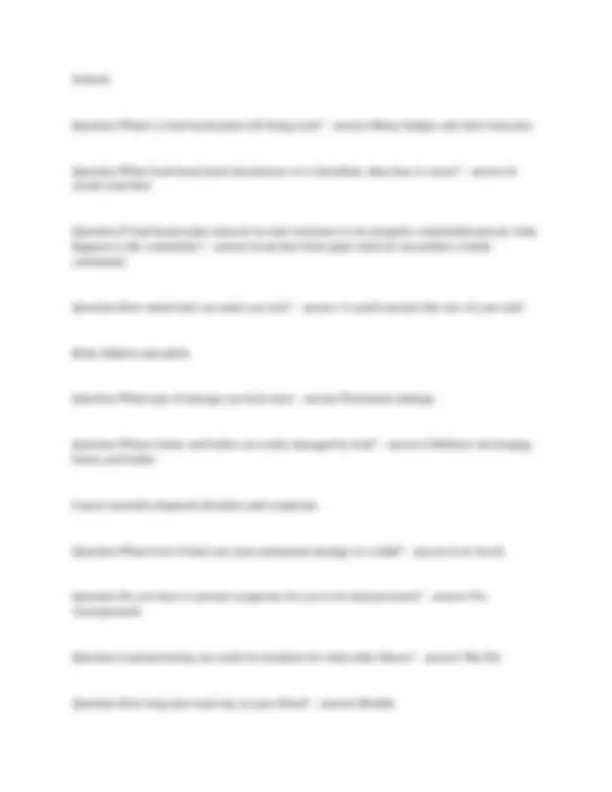
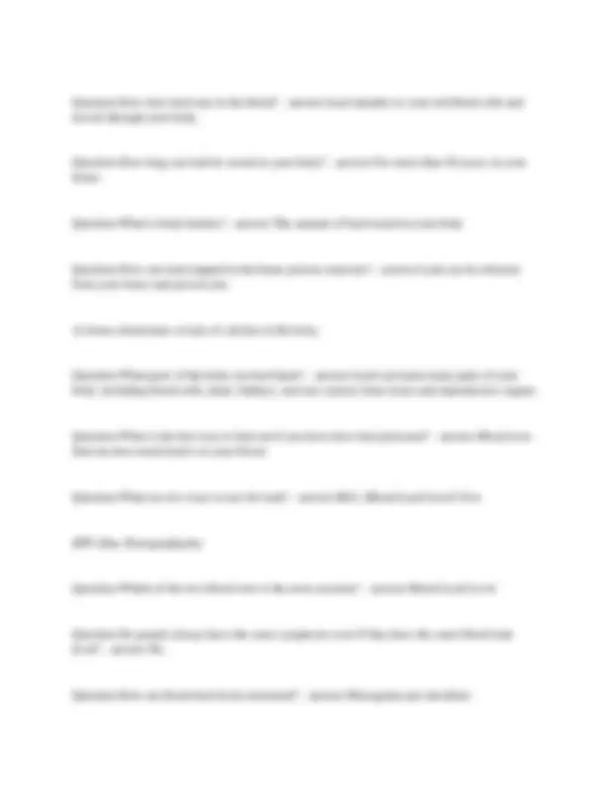
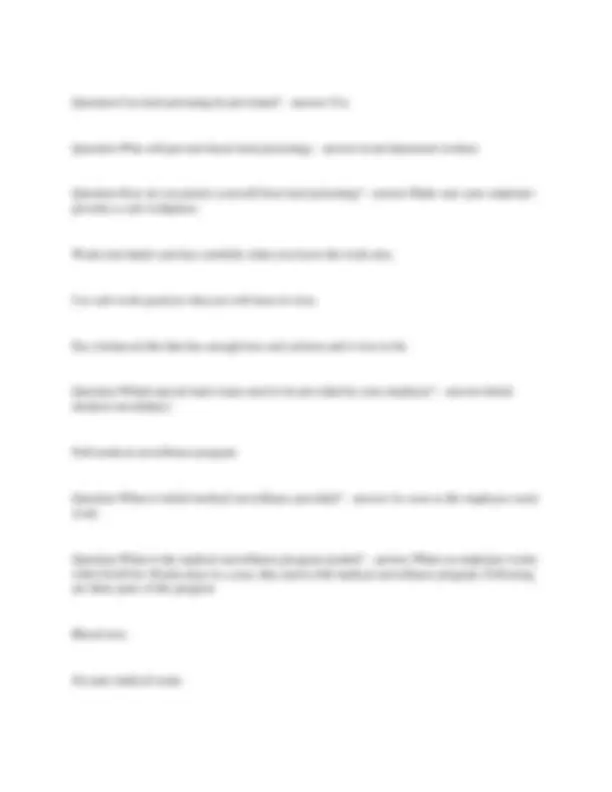
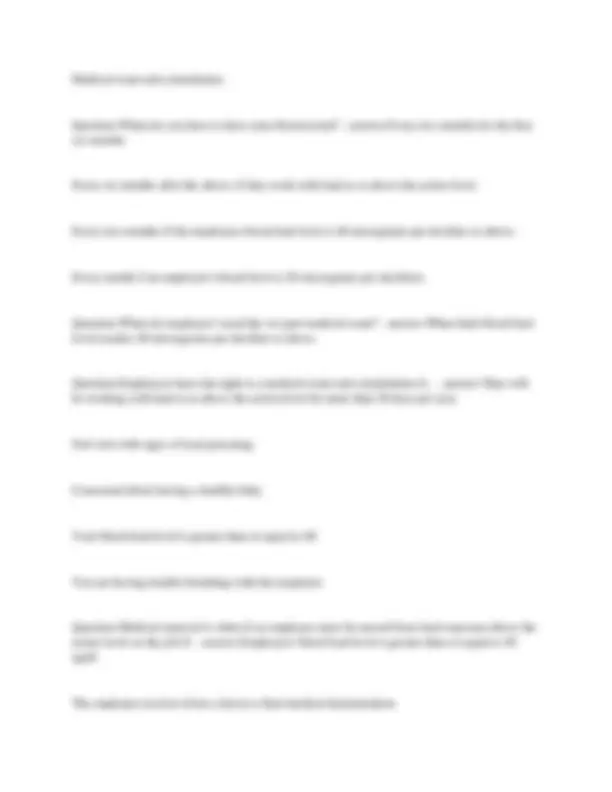
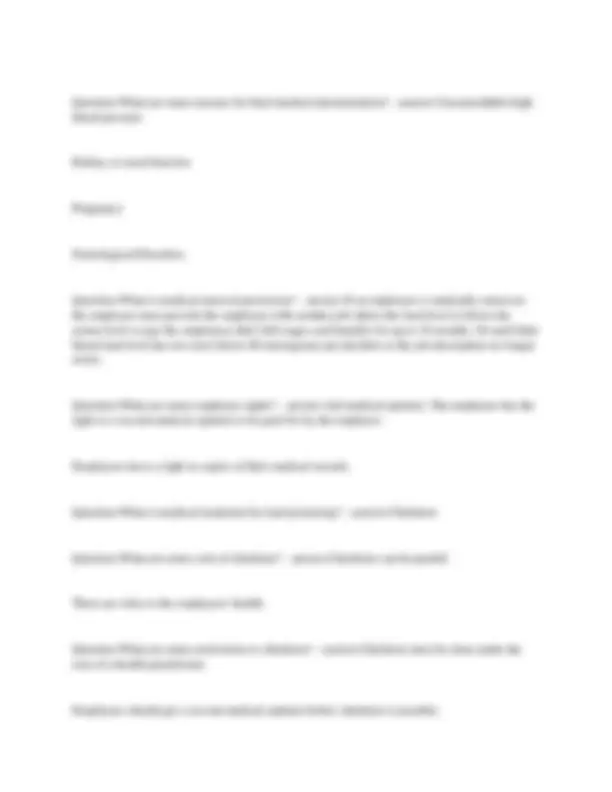
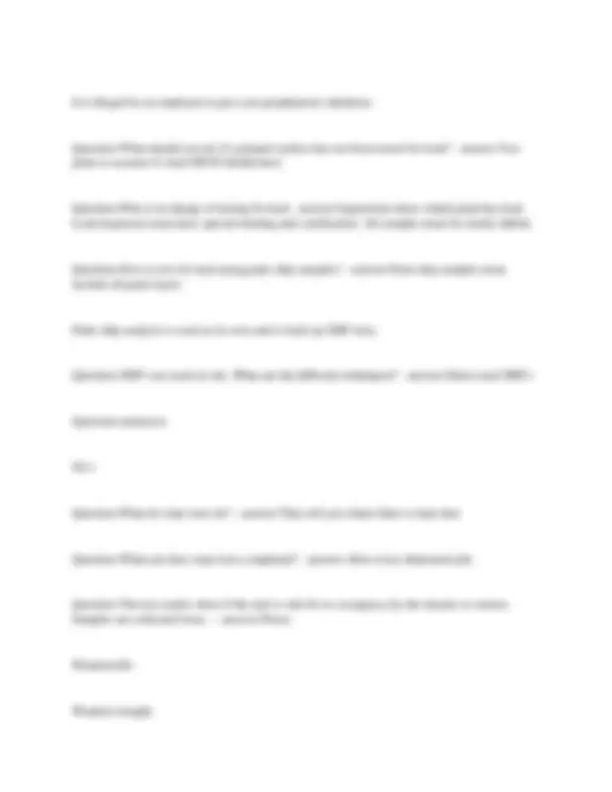
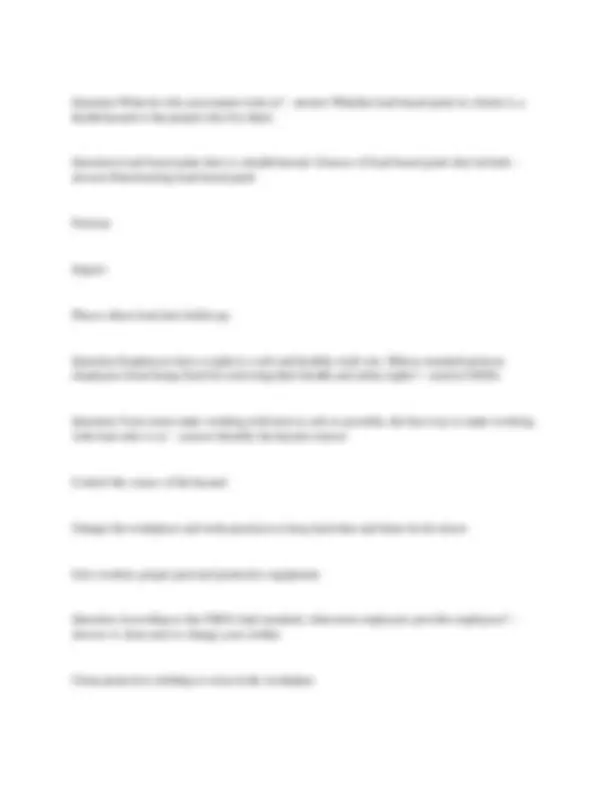
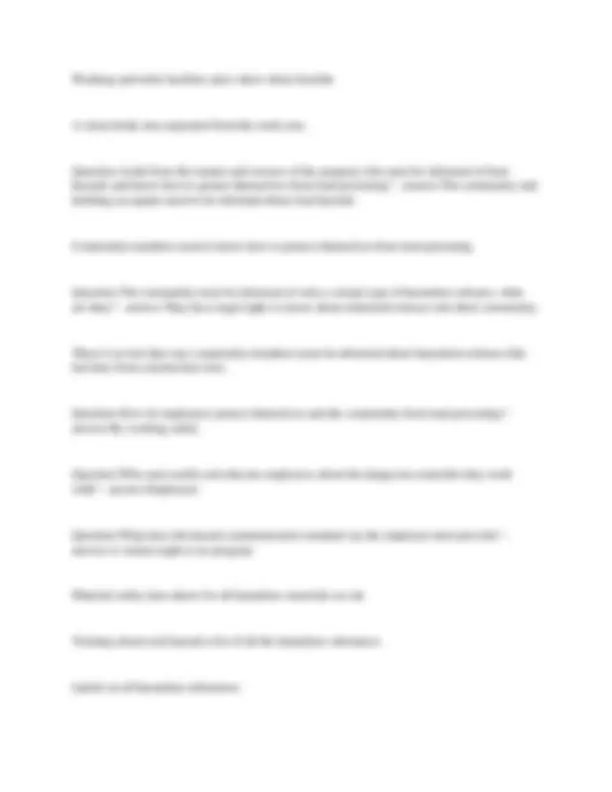
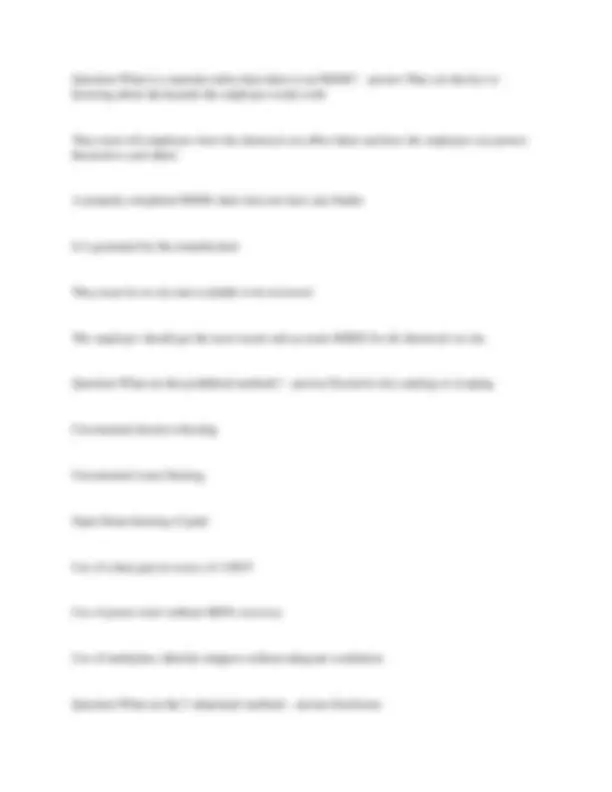
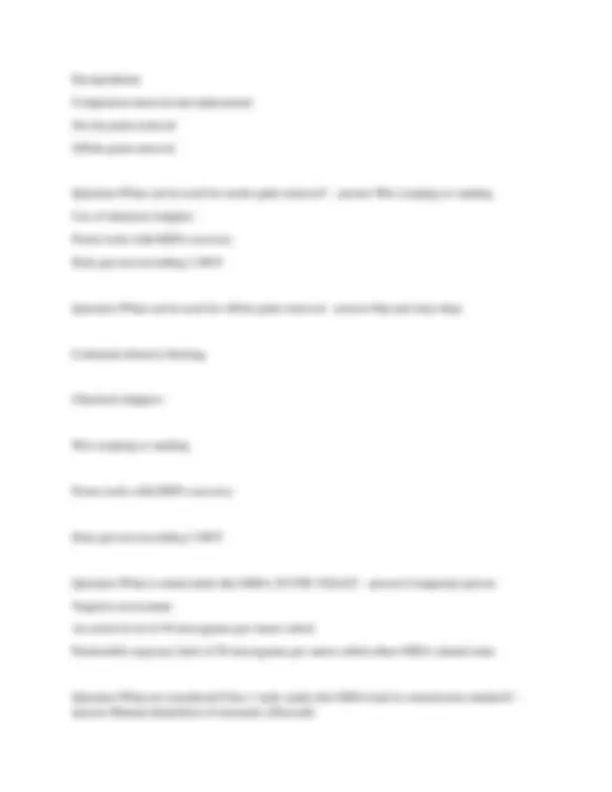
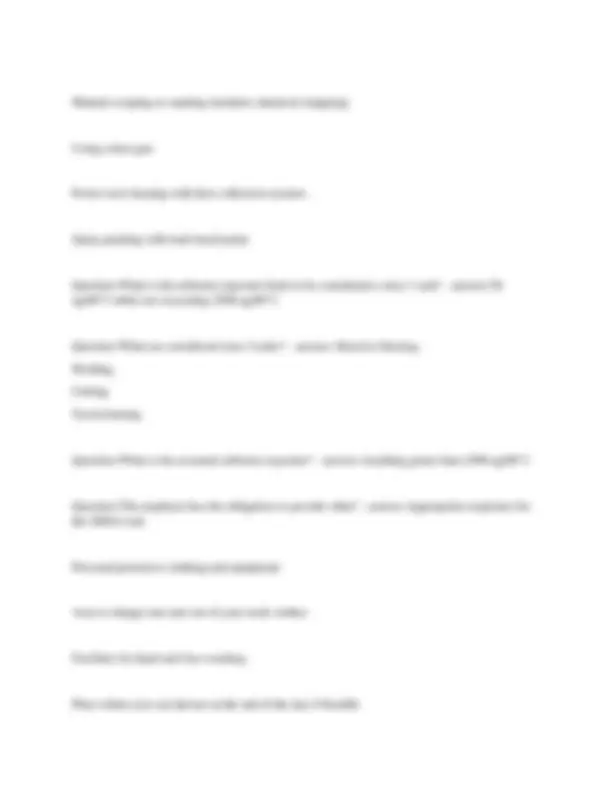
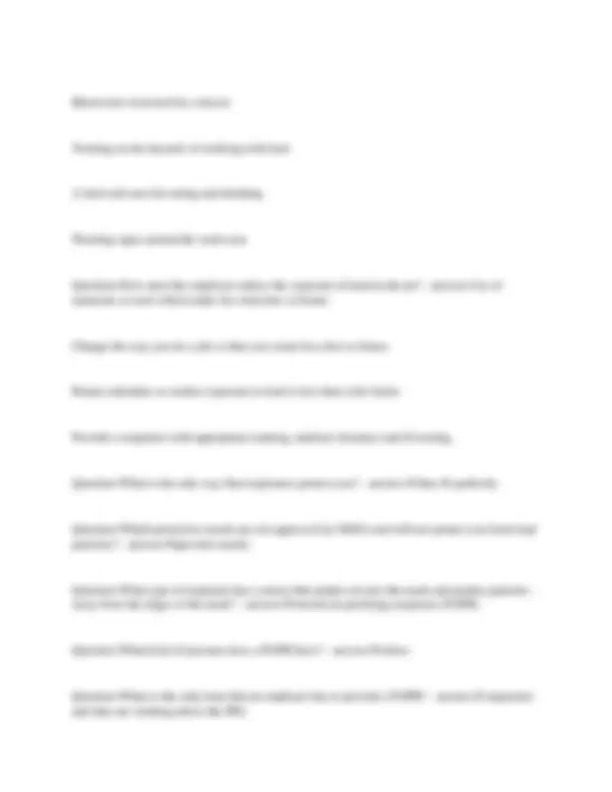
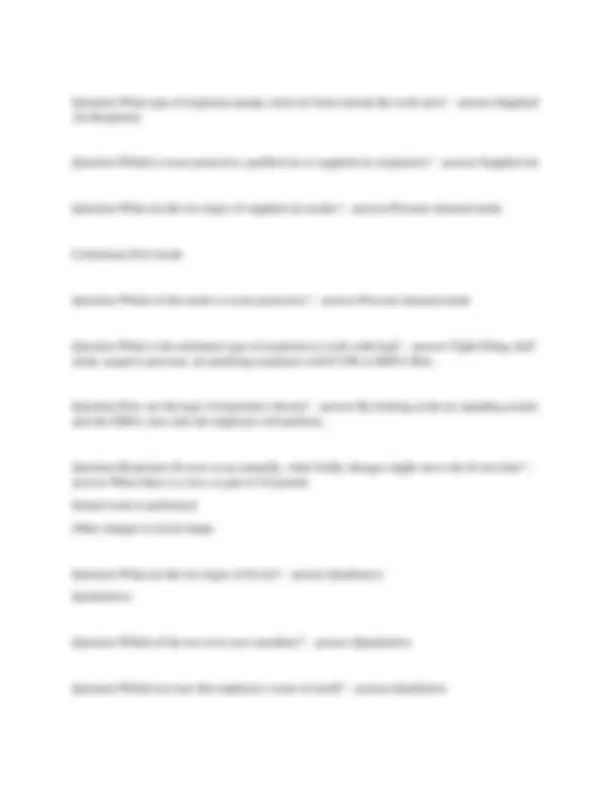
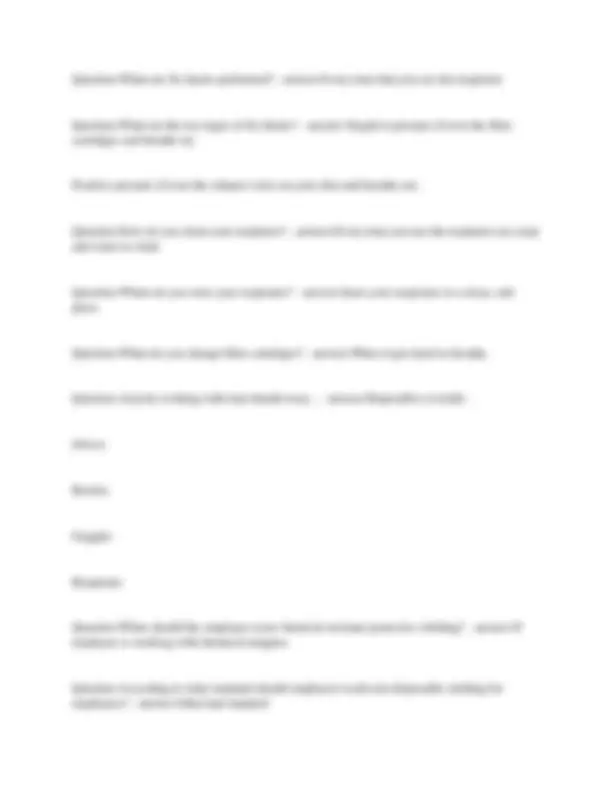
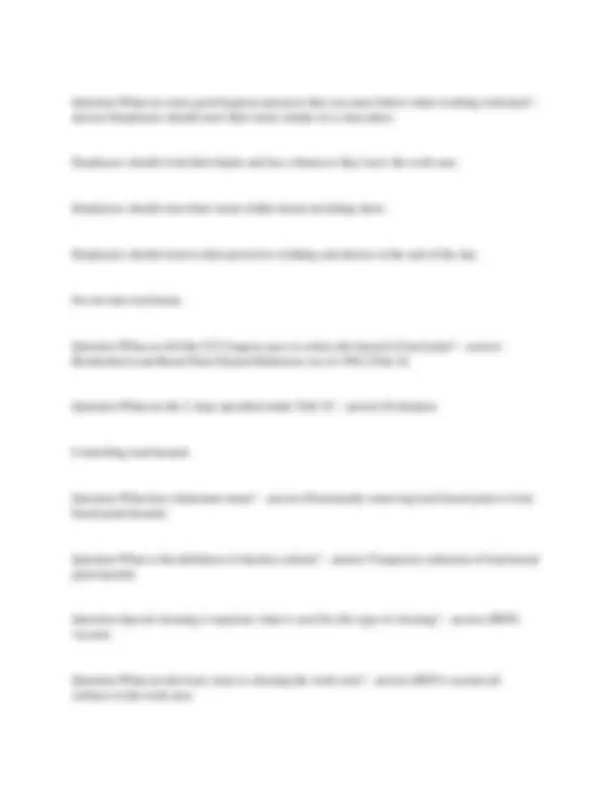
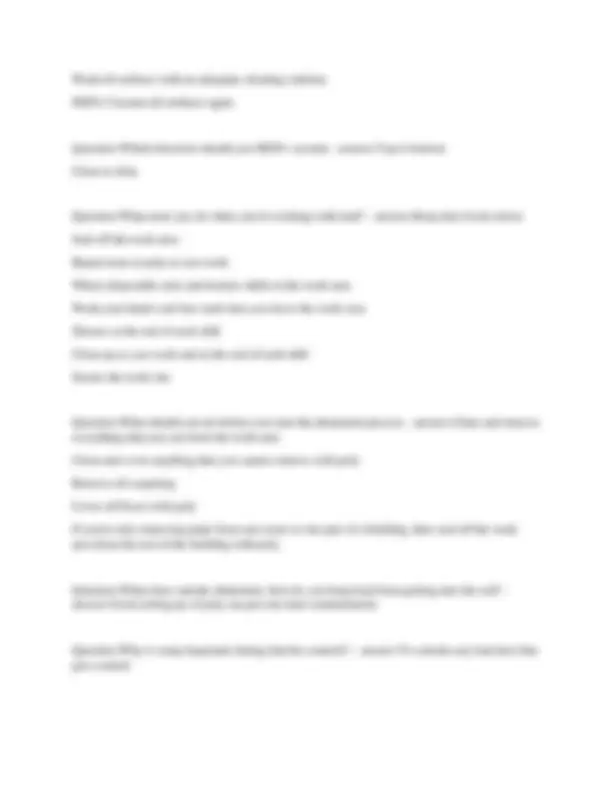
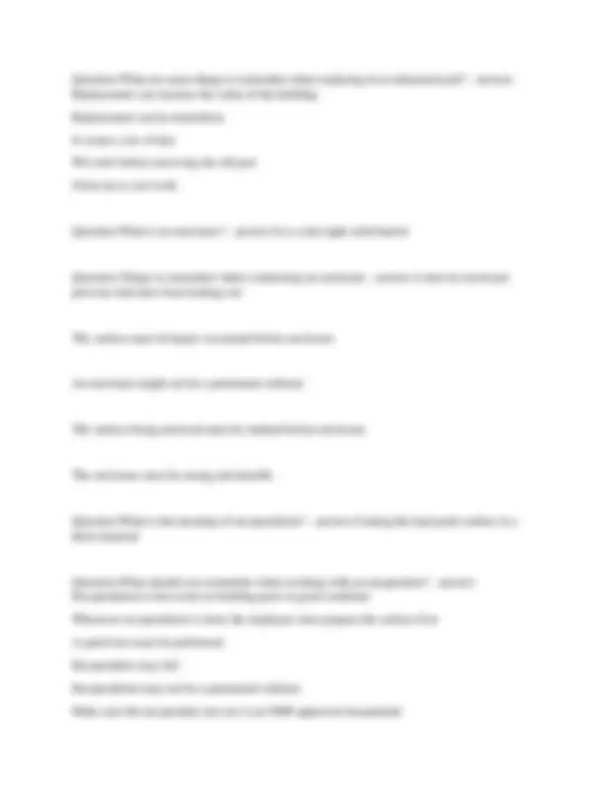
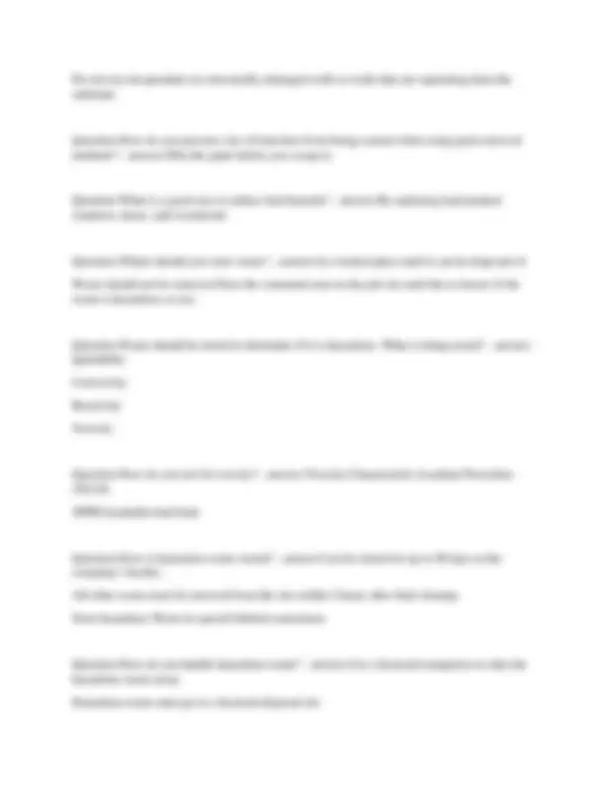
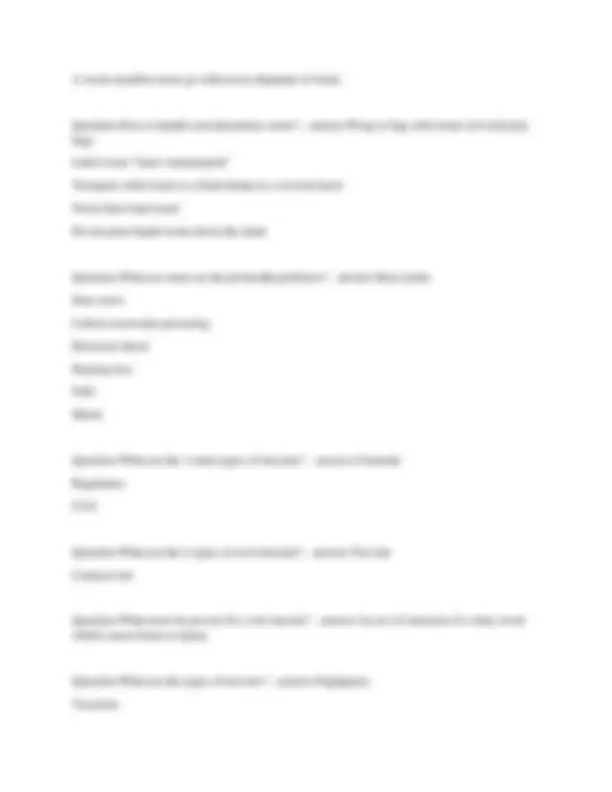
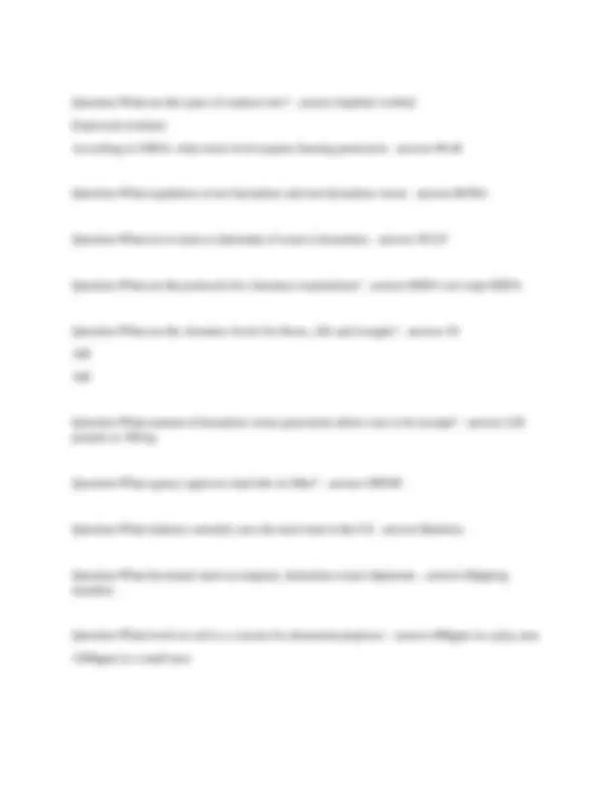
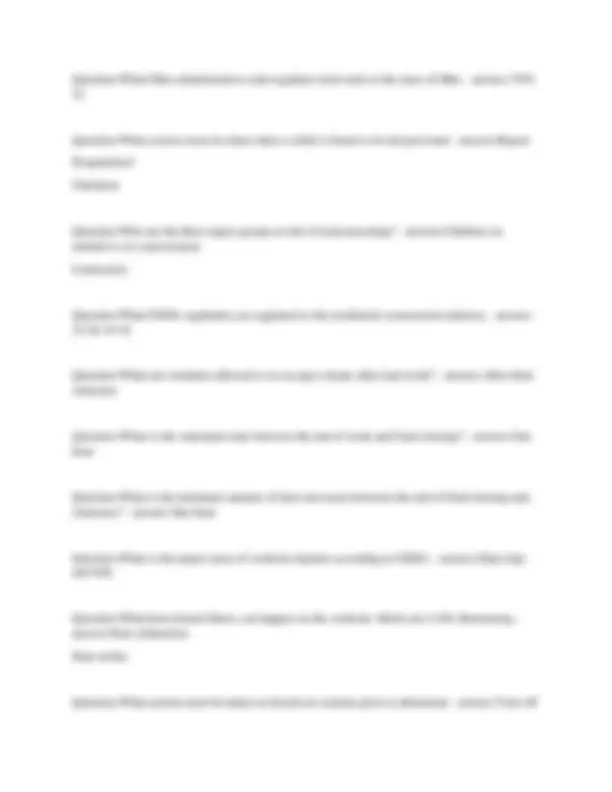



Study with the several resources on Docsity

Earn points by helping other students or get them with a premium plan


Prepare for your exams
Study with the several resources on Docsity

Earn points to download
Earn points by helping other students or get them with a premium plan
Community
Ask the community for help and clear up your study doubts
Discover the best universities in your country according to Docsity users
Free resources
Download our free guides on studying techniques, anxiety management strategies, and thesis advice from Docsity tutors
OHIO LEAD ABATEMENT CONTRACTOR EXAM LATEST TEST WITH DETAILED QUESTIONS AND ACCURATE ANSWERS GRADED A+.pdf
Typology: Exams
1 / 52

This page cannot be seen from the preview
Don't miss anything!













































Question-Form of lead used in household paint products - answer-White lead Question-Sources of lead contamination for yards and playgrounds - answer-soil, roof flashing, paint dust from houses Question-Lead-based paint under the Consumer Product Safety Commission - answer-0.06% lead by weight Question-Year CPSC banned lead-based paint - answer- 1978 Characteristics of lead - answer-flexible, heavy, blue-gray, metal, soft, toxic Question-Common consumer products containing lead - answer-lead-based paint, leaded gas, soil, food, water, pottery, crystal glassware, fishing sinkers, bullets Question-Why was lead used in products? - answer-prevents corrosion, kills mold and mildew, easy to help paint entry as a pigment Question-Lead-based paint according to the EPA and HUD - answer-0.5% lead by weight Question-Level of lead triggering OSHA regulations in construction - answer-any amount
Question-How can lead enter the body? - answer-Breathing, eating Question-Organs that may be damaged by lead - answer-heart, kidneys, nervous system, bone Question-Symptoms of lead poisoning - answer-Brain damage, blood issues, fatigue, vomiting or constipation, depression, headaches, weakness, dizziness, forgetfulness, joint and muscle pain Question-Duration lead remains in the blood - answer-30 days Question-Duration lead remains in soft tissue - answer-30 days Question-Duration lead remains in bones - answer-30 years Question-Lead body burden - answer-amount of lead stored in the body Question-Chronic lead poisoning - answer-long-term, low dose exposure Question-Acute lead poisoning - answer-short-term, high dose exposure Question-Regulated blood-lead level in children - answer-5 μg/dl Question-Focus on children under 6 years of age - answer-brain still developing, high absorption rate, hand-to-mouth activity Question-Medical procedure to remove lead from the body - answer-Chelation Question-Title X - answer-the Residential Lead-Based Paint Hazard Reduction Act
Question-OSHA's action level - answer-30 μg/m³ Question-OSHA's PEL for lead - answer-50 μg/m³ Question-PEL meaning - answer-Permissible Exposure Limit Question-Equipment needed for personal monitoring - answer-Sample cassette, rotameter, personal sampler pump Question-Placement of the sample cassette - answer-in breathing zone Question-Acceptable flow rate for personal monitoring - answer- 1 - 4 liters Question-Negative exposure assessment - answer-air exposure below PEL Question-Reliance on monitoring for similar jobs when below action level - answer-1 year Question-Reliance on monitoring for similar jobs when above action level but below PEL - answer-not specified Question-PEL - answer-Permissible Exposure Limit. Question-Action Level - answer-The threshold above which certain actions must be taken to protect workers. Question-Exposure Monitoring - answer-The process of measuring the level of exposure to hazardous substances.
Question-Hand Washing - answer-An additional protective measure required when exposures are below the action level. Question-Blood Testing - answer-Required if exposures are above the action level for any day in a calendar year. Question-ZPP - answer-Zinc Protoporphyrin, a blood test for lead exposure. Question-Medical Surveillance - answer-Required if exposures are above the action level for more than 30 days in a calendar year. Question-Blood Lead Level Monitoring - answer-Additional monitoring if an employee's blood lead level exceeds 40 ug/dl. Question-Personal Monitoring Equipment - answer-Includes sample cassette, rotameter, and personal sampling pump. Question-Breathing Zone - answer-The area where the sample cassette is placed for monitoring. Question-Flow Rate for Personal Monitoring - answer-Acceptable flow rate is 1 - 4 liters. Question-Negative Exposure Assessment - answer-An assessment indicating that exposures are below the PEL. Question-Maximum Use Level of Half Face APR - answer-500. Question-Maximum Use Level of Full Face APR - answer-2500. Question-Respirator Filter for Lead Work - answer-HEPA / M 100.
Question-Endosure - answer-Mechanical-scented friction serving as a leak-type barrier. Question-Components commonly enclosed - answer-Walls, stairs, floors, windows, siding. Question-Latex paint and abatement - answer-Painting with latex paint is not a form of abatement because it does not last 20 years. Question-Soil abatement examples - answer-Remove and replace concrete. Question-Soil interim control example - answer-Gravel or mulch. Question-Additional controls for removing contaminated soil - answer-Consider rain and wind. Question-Problem with heavy equipment for soil removal - answer-Cleaning equipment. Question-Warning signs placement - answer-Placed at the entrance when setting up a work area. Question-Protecting occupants and belongings - answer-Relocate them. Question-Working while occupants are present - answer-Provide access in and out. Question-Critical barrier - answer-6 mil polyethylene sheeting put over openings in the work area. Question-Poly flap doorway creation - answer-Needed when exiting the workplace to clean. Question-HVAC vents in the work area - answer-Cover them up. Question-Stopping work outside - answer-Stop if rain or wind exceeds 20 mph.
Question-Sealing doors and windows outside - answer-All openings must be sealed from work. Question-Occupants during outside work - answer-Provide every occupant in the house with information. Question-Debris generated during abatement work - answer-Put in bags or poly. Question-Goose necking a bag - answer-Twist the opening, tap it, double end over and tap again. Question-Lead painted components removal - answer-Tag and wrap in poly. Question-Daily cleaning - answer-Cleaning dust and debris, pick up damp cloth. Question-EPA final cleaning steps - answer-HEPA vacuum, wet clean, HEPA vacuum again. Question-Cleaning from top to bottom - answer-To avoid recontamination. Question-Vacuum required for lead work - answer-HEPA vacuum. Question-Thickness of polyethylene in lead abatement - answer-6 mil. Question-Thickness of plastic waste bags in lead abatement - answer-6 mil. Question-Heat gun temperature limit - answer-1,000 degrees Fahrenheit. Question-Prohibited chemical stripper - answer-Methylene chloride. Question-Sanding lead painted surfaces - answer-Must wet it.
Question-Fall protection height requirement - answer-Required at heights of 6 feet when using a scaffold. Question-Material Safety Data Sheet - answer-first aid response, existence of hazards in product, need for PPE when using product Question-Strict liability - answer-We are liable under law even if you don't know. Question-Contract - answer-An agreement between 2 parties to exchange things of value. Question-Tort - answer-Claim that someone was negligent. Question-Elements of tort - answer-1. Someone had a duty. 2. Did not do the duties. 3. Resulted in damages (breach of duty). Question-Defense against negligence claim - answer-Followed the standard of care of the industry. Question-Reasonable care defense - answer-What any reasonable, competent person does. Question-State-of-the-art defense - answer-Following the highest standard of care. Question-Workers compensation insurance - answer-Covers injuries on the job. Question-General liability insurance - answer-Covers damages caused by someone. Question-Errors-and-omissions insurance - answer-Covers damages caused by advice. Question-Occurrence insurance - answer-Covers damages that occur while insurance is in place.
Question-Claims-made insurance - answer-Covers claims made during the policy period. Question-Bid bond - answer-Covers damages to owner from contractor. Question-Payment bond - answer-Covers supplies on site. Question-Performance bond - answer-Covers money for contractor to complete job. Question-Performance specification - answer-Specifies the outcome required. Question-Means-and-methods specification - answer-Specifies how to achieve the outcome. Question-EPA favored specification - answer-Means and methods. Question-Lead hazard responsibility - answer-The owner is ultimately responsible. Question-Public Housing Agency - answer-A government entity that owns housing. Question-Vicarious liability - answer-Liability for actions of others. Question-Contract documents - answer-Legal documents. Question-Specifications - answer-Scope of work. Question-Requirements in contract documents - answer-Insurance, deadlines, responsibilities. Question-Requirements in specifications - answer-Abatement methods, protection requirements.
Question-Soil abatement success determination - answer-Soil sample. Question-Interim control of soil success determination - answer-Visual inspection. Question-Convert 400 ppm to percentage by weight - answer-0.04. Question-Convert 5,000 ppm to percentage by weight - answer-0.5. Question-Lead Based Paint per EPA HUD - answer-1.0 mg cm2 or 0.5 % by weight What does lead abatement include - answer-- Removal of lead-based paint and lead contaminated dust
Question-HUD - answer-Department of Housing and Urban Development Question-OSHA - answer-Occupational Safety and Health Administration Question-CDC - answer-Centers for Disease Control and Prevention Question-DHS - answer-Department of Health Services (City of Milwaukee) Question-DNR - answer-Department of Natural Resources (City of Milwaukee) Question-What does HUD oversee? - answer-Federally owned or assisted housing Question-What does OSHA oversee? - answer-Worker safety and protection Question-What are the purposes of air monitoring? - answer-- Determines employee exposure/risk
Question-How does 29 CFR 1926.62 define a "competent person"? - answer-A person capable of identifying existing and predictable lead hazards in the surroundings or working conditions, who has authorization to take prompt corrective measures to eliminate them, and who makes frequent and regular inspections of jobsites, materials, and equipment as part of a program to ensure that workers are not exposed to excessive levels of airborne lead. Question-What are the steps to lead abatement? - answer-- Arrange for risk assessment/paint inspection
Question-How much poly must be used on exterior abatement projects? - answer-Two layers of 6 mil poly in a minimum of 10 ft. Of all directions of the work area. Question-What is the most important piece of safety equipment for worker protection? - answer- Respirator Question-T/F: An employee should always perform a positive/negative seal check when donning a respirator. - answer-True Question-OSHA states that if you do not have an exposure assessment, you must assume you are _______ over the PEL. - answer-10x Question-What three interior areas are of key concern for lead? - answer-- Windows